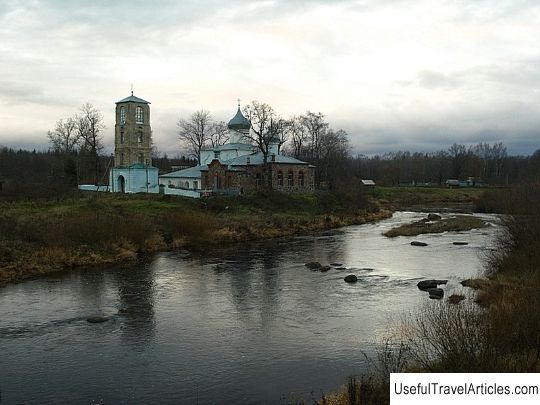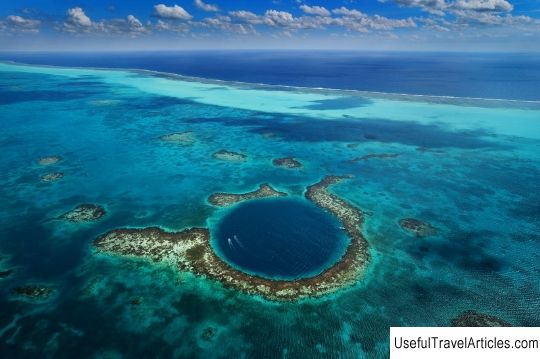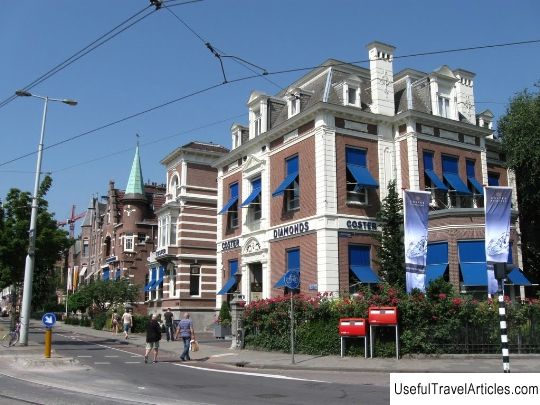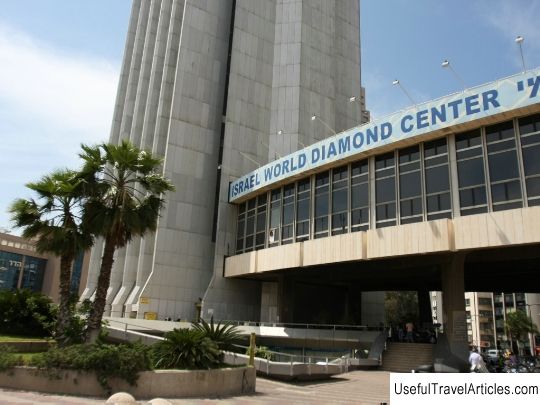Big Hole kimberlite pipe description and photos - South Africa: Kimberley
Rating: 9,6/10 (6895 votes) 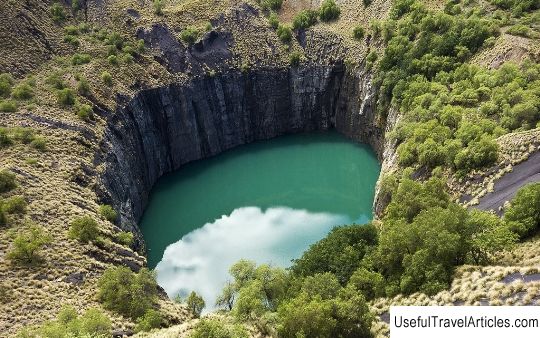
Big Hole kimberlite pipe description and photos - South Africa: Kimberley. Detailed information about the attraction. Description, photographs and a map showing the nearest significant objects. The title in English is Big Hole. Photo and DescriptionThe Big Hole Kimberlite Pipe (Big Hole) is an open-cut diamond mine of yesteryear in Kimberley. The first diamonds here were found on a hill by members of the Red Hat Party. from the town of Kolesberg on the Vooruitzigt farm owned by the De Beers brothers. The ensuing diamond rush led to the creation of the small mining town of Rush, later renamed Kimberley. From mid-July 1871 to 1914, 50,000 workers manually dug a large pit with picks and shovels and recovered 2,720 kg of diamonds. Big Hole, 463 m wide, was dug to a depth of 240 m, but then partially filled with debris, reducing the depth to 215 m. Since then, it has collected about 40 m of water, leaving 175 m of the excavation visible. After ground operations became too dangerous and unproductive, De Beers began mining kimberlite in a closed mine at a depth of 1,097 meters. In 1872, a year after the start of work, the population of the mining camp grew to 50,000. Many miners have died in mine accidents, diseases and unsanitary conditions, lack of water, fresh food and extreme summer heat. On March 13, 1888, the leaders of the various mines decided to combine the separate excavations into one large mine and one large company, known as De Beers Consolidated Mines Limited, under the management of Cecil John Rhodes, Alfred Beith and Barney Barnato. This large company worked on Big Hole until a depth of 215 m was reached with a surface area of about 17 hectares and a perimeter of 1.6 km. By August 14, 1914, when more than 22 million tons of land were dug and almost 3,000 kg of diamonds were recovered, work at the mine was stopped. It is now considered the largest hand-dug mine on earth. In 2005, researchers recounted and found that the hand-dug Jagersfontein and Bultfontein diamond mines, also in South Africa, are deeper and larger than Big Hole, but they were created using earthmoving technology rather than purely manual labor. Big Hole diamond mining was closed in 1914. Over time, more and more tourists began to come to Kimberley to see the quarry, which has become a tourist attraction. In 1960, it was decided to collect old buildings in one place and organize a museum. In 1965, De Beers appointed Vasily Humphries as consultant to the Early Kimberley Open Air Museum - with cityscapes, dioramas, mining equipment and vehicles. The official opening of the museum took place during the celebration of the centenary of Kimberley in 1971. The collection of the museum is constantly updated with new exhibits from the time of the diamond rush. Between 2002 and 2005, De Beers invested $ 50 million to recreate the mining town that once flourished around the Kimberley Big Hole to attract tourists from all over the world.        We also recommend reading Abbaye Saint-Aubin d'Angers description and photos - France: Angers Topic: Big Hole kimberlite pipe description and photos - South Africa: Kimberley. |
